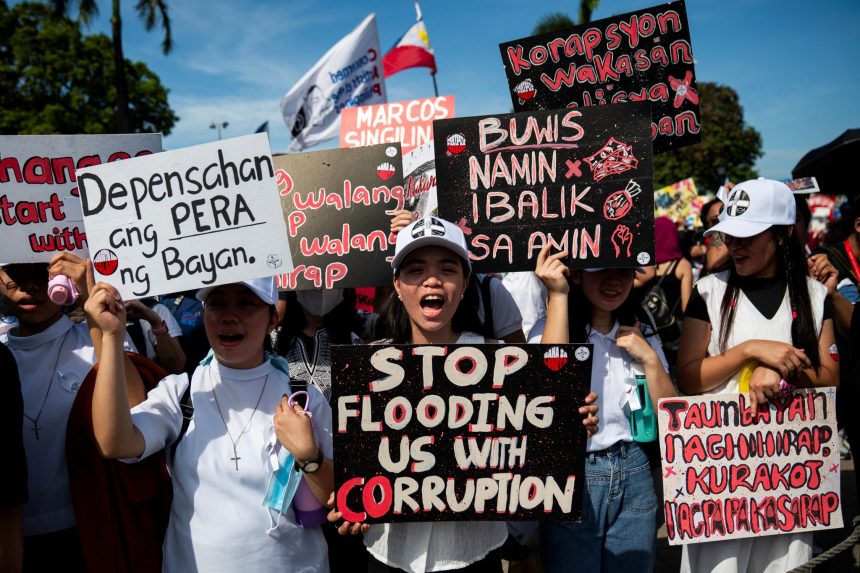What Sparked the Uproar
Thousands of Filipinos took to the streets of Manila and other cities on 21 September 2025, protesting against corruption in government flood control projects. Allegations have emerged that billions of pesos intended for flood mitigation were siphoned off, while many projects labelled as completed never materialized—or were only partially built.
These revelations became central in President Ferdinand “Bongbong” Marcos Jr.’s State of the Nation Address in July, after weeks of deadly flooding raised criticism over government inaction and the mismanagement of flood control infrastructure.
The Protests: Scale, Groups & Symbolism
- The demonstrations, called “Baha sa Luneta: Aksyon Laban sa Korapsyon” and the Trillion Peso March, drew diverse groups—students, church organizations, civil society, celebrities—many of whom demanded accountability and transparency.
- Protesters convened at symbolic sites like Rizal Park (Luneta), the People Power Monument, and along EDSA Shrine.
- Sunday’s date for many rallies coincided with the anniversary of the 1972 declaration of martial law by Ferdinand Marcos Sr., chosen for its momentous symbolism in a country with a history of authoritarian rule.
What Protesters Are Demanding
The demonstrators have laid out clear demands, including:
- Full investigation into fraudulent or “ghost” flood control projects, including those that exist only on paper or were never constructed.
- Resignation or accountability of implicated officials, including lawmakers, contractors, and engineers.
- Recovery of misused funds and public release of asset declarations and audit results.
- Assurance of transparency in future infrastructure spending and stronger oversight of government bodies like the Department of Public Works and Highways (DPWH).
Government Response & Political Fallout
- President Marcos Jr. has acknowledged public anger, calling the scandal an “inflection point” in governance. He has initiated an independent infrastructure commission, suspended some flood project funding, and vowed that no friends or political allies will be protected from investigation.
- In the wake of the scandal, several prominent figures have resigned or been replaced—among them the House Speaker and the Public Works Secretary.
- The central bank has introduced tighter rules on large cash withdrawals to help curb financial irregularities linked to contractors and officials.
Tensions & Confrontations
Most demonstrations were peaceful, but some clashes occurred:
- Near the presidential palace, a smaller group of protesters allegedly threw rocks, bottles, and even firebombs at the police. Roads and bridges were blocked.
- Police responded with arrests—dozens of people were detained, including minors in some cases. Tear gas and water cannons were used in certain protest zones.
- Authorities have urged calm, with church leaders and the president asking protests to remain peaceful.
Why It Matters
- The protests reflect deep frustration among ordinary Filipinos, especially as many suffer flood damage and loss while public funds appear to be misused. The issue cuts across political lines and has drawn broad support from different sectors.
- It poses a test of the Marcos administration’s commitment to transparency, accountability, and reform. If the investigative commission can deliver meaningful prosecutions and system improvements, it may restore some trust. Otherwise, political instability or further protests may follow.
- This episode adds to a broader regional pattern of citizens mobilizing against corruption and demanding better governance. Protesters in the Philippines are using symbols from past struggles (martial law, people power) to underscore continuity in calls for accountability.









